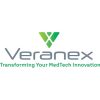It’s clear that 3D printers have become the most powerful new tool in the product development process; widely used in industries ranging from automotive to medical; facilitating prototyping and manufacturing processes alike. When used appropriately, engineers and designers can transform their ideas into tangible, testable objects within a matter of hours. When misused, however, parts can become misleading, if not fully erroneous approximations of a final design.
As they quietly ply their computer-guided craft behind the window of a MakerBot Storefront, 3D printers can convey the impression that the parts they’re building have been created with minimal effort and not much more human involvement than a click of a button, but the reality is quite the opposite. Whether you want to print yourself a personalized coffee mug, or a production level medical device prototype for clinical trials, the reality is that there’s more work required than what’s seen on the surface, and quite a bit of technical knowledge. Properly designed 3D printed parts can provide critical information to your client’s product development programs. They bring intangible computer models to life and offer more vivid, memorable and compelling insights to a development team. Whether you’re an engineer, designer, or technical tinkerer, here’s a basic road map to a few of the most important aspects of modern 3D printing.
The process
How does one break into the world of 3D printing? To create successful 3D printed parts you’ll first need CAD software where you can design and visualize those parts, which are then translated into a file format that 3D printers can read. While most professionals will use Solidworks, Pro-Engineer, or Rhino (engineering and design industry standards), there are also several inexpensive or even free software packages available to anyone willing to put in the time to learn them.
At the core of it all, 3D printing is an additive process, meaning that parts are built up layer by layer, using technologies like selective laser sintering (SLS), fused deposition modeling (FDM), stereolithography (SLA), or any number of other processes. The material that makes up the layers isn’t the only defining feature of 3D printed parts – depending on the technology, users can customize surface finishes, colors, textures, and even add machine features (i.e. threads). Depending on the size of the parts and the capabilities of the printer, print time can vary from a few days to a few hours.
Differences in materials (thermoplastics, ceramic powders, photopolymers, metal alloys, etc) and how these material layers are deposited are what give us the variety of printers that are currently available.
Know your materials
Long before you’re ready to hit the print button, you’ll need to identify what it is that your part needs to do. Are you designing a housing that has internal mechanisms that you would like to see? Perhaps a clear SLA is the best bet. Need to get a sense of how an overmolded design will feel? Then maybe a multi material Polyjet part would be better. Here is a brief list of the most widely used 3D print materials along with their process names.
- Plastics: FDM (Fused Deposition Modeling), SLA (Stereolithography), SLS (Selective Laser Sintering)
- Rubber: Polyjet
- Metals: DMLS (Direct Metal Laser Sintering)
- Ceramics: ZPrint plus glazing
For a list of additional mechanical properties and details, Protogenics has created a useful condensed technical guide that covers a wide range of the processes and materials out there.
Know your print technology
If you have purchased a relatively cheap 3D printer, chances are it’s an FDM (fused deposition modeling) machine, which means it lays down thin layers of extruded molten plastic. The resolution of FDM is usually more coarse than a process like SLA but you can print parts within hours and it’s great for getting the general aesthetic of the part you’re designing. Inexpensive FDM machines are great for quick idea generation, and are helpful when brainstorming with development partners, allowing you to bring concepts to life right before your client’s eyes. Additionally, this is a great way to prototype small mechanisms at a larger scale, especially in the medical device field where the actual part size might be less than the printer’s resolution.
On the other hand, if you require finer resolution, more exotic metal alloys, rubbers of varying durometers, or multi-colored parts, chances are it will be cheaper and more efficient to have the parts made by an outside vendor. Companies such as Solid Concepts, Vaupell, Quickparts, and Protogenics, to name a few, are capable and customer-friendly alternatives, offering low-to-medium volume options with very quick turnaround time.
Know your database
Every CAD package has its own quirks, advantages, and disadvantages, but as long as it can create or convert parts to an STL file, (and most of them can), you can create a part that can be printed. The STL file format is the “.pdf” of the 3D printing world; universally readable but usually impossible to edit once they’ve been saved in that format. Because of this, you want to be mindful of the print quality level required for the application when saving your 3D part database. Are you making an appearance model, or maybe a quick proof-of-concept mockup? Either of those options would demand a very different level of resolution.
Things to consider when converting a file to STL:
- STLs convert parametric databases (equation driven) to polygon model (points in space).
- Surfaces are broken down into many triangles that connect to form the part geometry.
- The user can select surface quality output (faceting) by choosing the resolution of these triangles. A less finely resolved model will produce a smaller file size.
Features and printing resolution
- Can your 3D printer create all the necessary geometry in your model?
- Thin walls may be partially printed – should certain features in the model be enlarged to ensure the success of the build?
- Do features (like holes) need to be incorporated into the part that will allow excess material to be removed?
Know when you really need it
It may be worth considering whether 3D printing is the best process for your prototype. Is your part likely to be flexed and bent by the nature of the design? Perhaps you want to machine it instead from solid material. Just as there are print shops that specialize in 3D printing, there are many other rapid fabrication houses that can turn out high quality, low volume parts at a similar cost. And often these parts will tell you more about a design than a printed part. Alternatives can include, but are not limited to, Cast Silicone, Prototype machining, and QuickCast Investment Casting.
With so many improvements occurring in the 3D printing industry, it may be difficult to resist the temptation to have it be your total prototyping/manufacturing solution. (And for some low-volume manufacturing applications, 3D printed parts may actually be preferred). But every designed part has different requirements, and the material properties are among the leading factors allowing that part to function properly. Your overall product design is only as good as the parts from which it’s created, and only as good as the maker who designs them.





